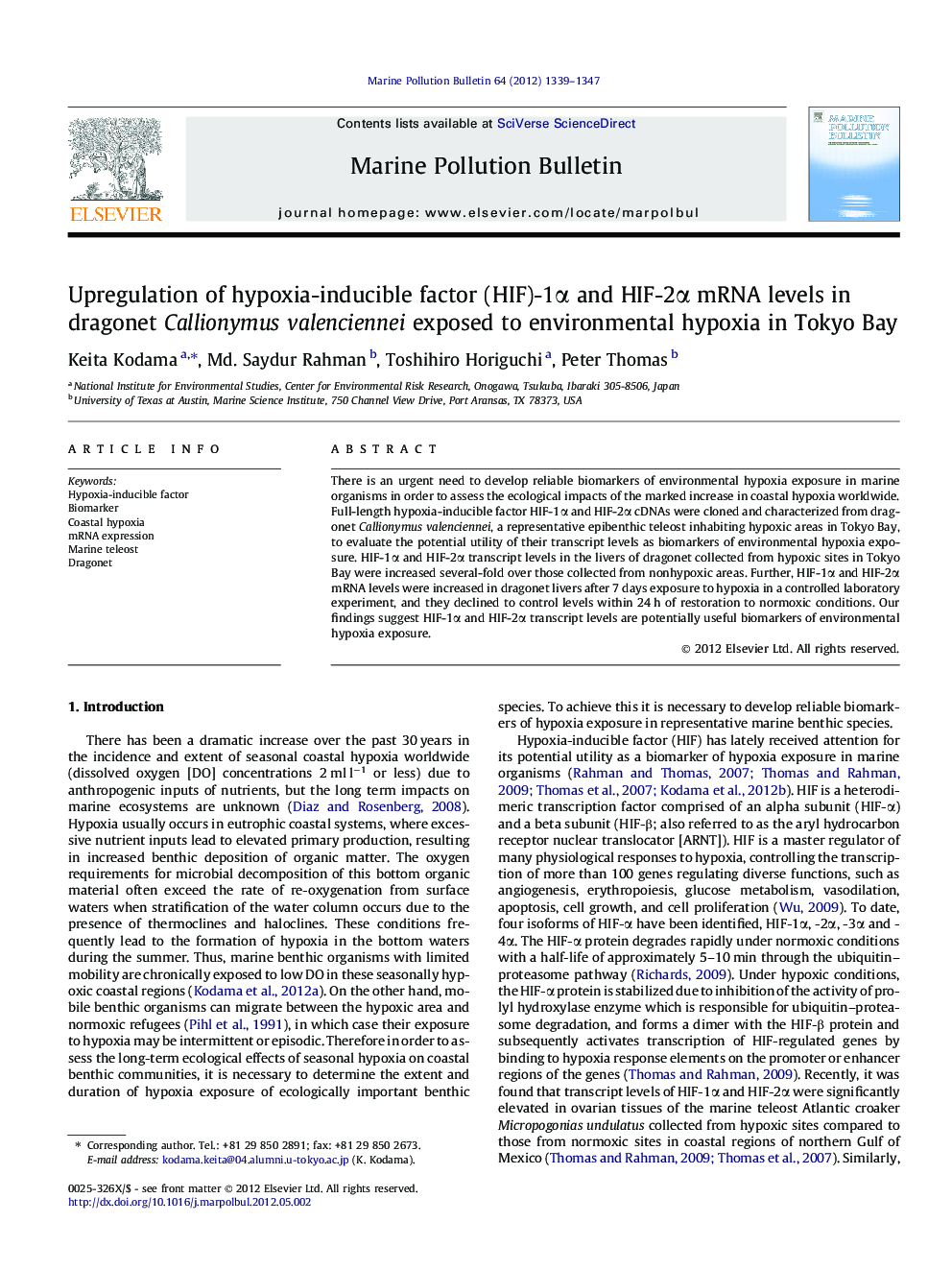| Article ID | Journal | Published Year | Pages | File Type |
|---|---|---|---|---|
| 6361571 | Marine Pollution Bulletin | 2012 | 9 Pages |
There is an urgent need to develop reliable biomarkers of environmental hypoxia exposure in marine organisms in order to assess the ecological impacts of the marked increase in coastal hypoxia worldwide. Full-length hypoxia-inducible factor HIF-1α and HIF-2α cDNAs were cloned and characterized from dragonet Callionymus valenciennei, a representative epibenthic teleost inhabiting hypoxic areas in Tokyo Bay, to evaluate the potential utility of their transcript levels as biomarkers of environmental hypoxia exposure. HIF-1α and HIF-2α transcript levels in the livers of dragonet collected from hypoxic sites in Tokyo Bay were increased several-fold over those collected from nonhypoxic areas. Further, HIF-1α and HIF-2α mRNA levels were increased in dragonet livers after 7 days exposure to hypoxia in a controlled laboratory experiment, and they declined to control levels within 24 h of restoration to normoxic conditions. Our findings suggest HIF-1α and HIF-2α transcript levels are potentially useful biomarkers of environmental hypoxia exposure.
⺠We cloned hypoxia-inducible factor-α cDNAs (HIF-1α and -2α) from epibenthic dragonet. ⺠Heart, kidney, liver, and gonad tissues had high expression of HIF-1α and -2α mRNAs. ⺠HIF-α transcript levels in liver tissues increased at hypoxic sites in Tokyo Bay. ⺠Increase in HIF transcript levels was confirmed after laboratory hypoxia exposure. ⺠HIF-α genes are potentially useful biomarkers of environmental hypoxia exposure.
